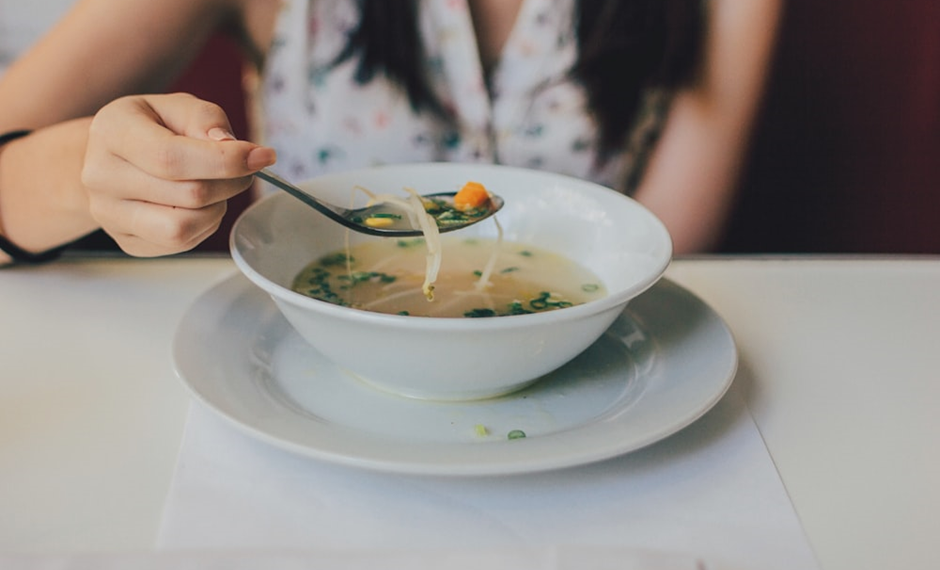Imagine a chilly evening, a cozy kitchen, and a pot of chickpea soup simmering on the stove, filling the room with inviting aromas. Chickpea soup is a beloved dish enjoyed by many, not just for its comforting warmth but also for its versatility and health benefits. Whether you’re a culinary expert or just starting out in the kitchen, mastering the art of chickpea soup can be a delightful and rewarding experience.
In this guide, we’ll explore essential tips to elevate your chickpea soup, transforming a simple dish into a culinary masterpiece. From selecting the right ingredients to perfecting the flavor balance, we’ll cover everything you need to know to impress your taste buds and those of your loved ones.
So grab your apron, gather your ingredients, and get ready to embark on a flavorful journey that will take your chickpea soup to the next level. Whether you’re seeking comfort, nutrition, or just a delicious meal, these tips will help you achieve the perfect bowl of chickpea soup.
Choosing Your Ingredients
The first step to an exceptional chickpea soup is selecting quality ingredients. If you’re using canned chickpeas, look for options with no added salt to control the sodium level in your soup. For those preferring dried chickpeas, remember to soak them overnight to shorten cooking time and enhance digestibility. Fresh ingredients for your broth base, like onions, garlic, and herbs, can significantly impact the soup’s flavor, so choose them wisely.
Enhancing Flavor with Unique Broth Choices
Beyond just the standard vegetable or chicken broth, consider experimenting with different broth bases to add a unique twist to your Chickpea soup recipe. A rich mushroom broth can introduce an earthy flavor, while a miso broth could offer a savory depth. These choices not only enrich the taste but also transform the soup, providing a distinctive character that sets your chickpea soup apart. When selecting your broth, ensure it complements the other ingredients and aligns with the flavor profile you aim to achieve in your soup recipe.
Top of Form
The Base Matters
A great chickpea soup starts with a flavorful base. Begin by sautéing onions and garlic in olive oil until they’re soft and fragrant. This process releases their natural sugars, adding depth to the soup’s flavor. Don’t rush this step; taking time to build a robust base will pay off in the final taste. You can also include carrots and celery for additional layers of flavor.
Spices and Seasonings
The spices and seasonings you choose can transform your chickpea soup from good to unforgettable. Common spices like cumin, coriander, and paprika complement chickpeas well, adding warmth and complexity.

Don’t be afraid to experiment with different combinations to discover what you love best. Fresh herbs like parsley or cilantro can be added towards the end of cooking to retain their vibrant flavors and colors.
Achieving the Right Texture
The texture of your chickpea soup can vary from rustic and chunky to smooth and creamy, depending on your preference. For a thicker soup, consider blending a portion of the chickpeas and vegetables and then reintegrating them into the pot. Alternatively, you can mash some chickpeas directly in the pot with a potato masher. If you prefer a brothier soup, adjust the amount of liquid to suit your taste.
Incorporating Vegetables and Proteins
Chickpea soup is versatile, allowing you to incorporate a variety of vegetables and proteins. Spinach, kale, or Swiss chard can add color and nutrition, while potatoes or sweet potatoes provide heartiness. For an extra protein boost, consider adding diced cooked chicken, sausage, or even tofu. These additions not only enhance the soup’s nutritional value but also its flavor and texture.
Tasting and Adjusting Flavors
An essential step in perfecting your chickpea soup is to taste and adjust the flavors as you cook. This process allows you to fine-tune the balance of seasonings, ensuring every spoonful is delicious. If the soup tastes bland, it may need more salt. If it’s too acidic, a pinch of sugar can help balance the flavors. Don’t underestimate the power of a good quality broth; it can significantly enhance the soup’s overall taste.

Adding a splash of lemon juice or a dash of vinegar can also brighten the soup, giving it a subtle tang that elevates the other flavors.
Serving and Garnishing
Presentation matters, and how you serve and garnish your chickpea soup can take it from homey to restaurant-quality. Consider drizzling a bit of high-quality olive oil over the top, adding a sprinkle of fresh herbs, or a dollop of yogurt for creaminess. Crunchy croutons, a slice of toasted artisan bread, or a sprinkle of roasted seeds can add texture contrast. These finishing touches not only enhance the flavor but also make the dish visually appealing.
Storing and Reheating Tips
Chickpea soup can taste even better the next day as the flavors meld and deepen. When storing leftovers, let the soup cool to room temperature before refrigerating it in airtight containers. It typically keeps well for up to 4 days. For reheating, do so gently on the stove or in a microwave, stirring occasionally to ensure even warming. If the soup has thickened too much upon storage, you can add a bit of water or broth to adjust the consistency.
Experimenting with Global Flavors
Chickpea soup is a canvas for culinary creativity, and exploring global flavors can transform your soup into a worldly dish. For a Moroccan twist, incorporate spices like cinnamon, turmeric, and ginger, and perhaps some dried apricots for sweetness. If you’re inclined toward Indian cuisine, adding curry powder, coconut milk, and mustard seeds can create a delightful fusion of flavors. Experimenting with these international ingredients not only broadens your culinary horizons but also keeps your chickpea soup exciting and new.
Incorporating Superfoods for Nutritional Boost
Elevate the health benefits of your chickpea soup by adding superfoods. Ingredients like kale, quinoa, or chia seeds can enhance the nutritional profile without compromising taste. These superfoods introduce additional vitamins, antioxidants, and fibers, making your chickpea soup not only a comfort food but also a powerhouse of nutrients. Explore various superfoods and their complementary flavors to make your soup a perfect blend of health and taste.
Conclusion
Perfecting your chickpea soup is an adventure in taste and texture. It’s about choosing the right ingredients, building a flavorful base, adjusting the seasonings to your liking, and adding personal touches that make the dish uniquely yours. Remember, the best soups are made with patience and love, so take your time to savor the process. Whether you stick to classic recipes or venture into global flavors, the key is to enjoy the journey and share the delicious results. Happy cooking!













